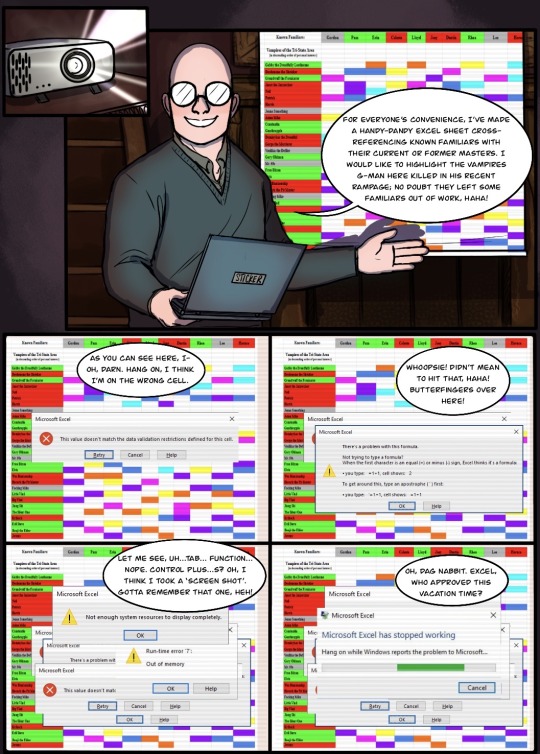#data validation in excel
Explore tagged Tumblr posts
Text
Mastering Data Validation: Ensuring Accuracy and Reliability in Your Data
In today’s data-driven world, the quality of your data can make or break your business decisions. Ensuring that your data is accurate, consistent, and reliable is paramount, and this is where data validation comes into play. Whether you are a seasoned data scientist, a business analyst, or just starting in the field of data management, mastering data validation is crucial for the integrity and usability of your data.
What is Data Validation?
Data validation is the process of ensuring that the data you collect, process, and analyze meets specific criteria and is both accurate and useful. This involves checking the data for errors, inconsistencies, and missing values. The goal is to ensure that your data is clean, reliable, and ready for analysis.
Why is Data Validation Important?
Accuracy and Precision: Valid data ensures that the information you rely on for decision-making is accurate. Inaccurate data can lead to incorrect conclusions and poor business decisions.
Consistency: Consistent data allows for reliable comparisons and trend analysis. Without consistency, it is challenging to track progress or identify patterns over time.
Compliance: Many industries have regulatory requirements for data management. Data validation helps ensure compliance with these regulations, avoiding potential legal issues and penalties.
Efficiency: Clean data reduces the time and resources needed to correct errors and allows teams to focus on productive tasks.
Key Techniques for Data Validation
Input Validation: This is the first line of defense against bad data. Input validation checks the data at the point of entry to ensure it meets predefined criteria. This can include format checks (e.g., ensuring dates are in the correct format), range checks (e.g., values fall within a specific range), and mandatory field checks.
Data Cleansing: This involves identifying and correcting errors in the data. Techniques include removing duplicates, correcting misspellings, and addressing missing values. Data cleansing is crucial for maintaining data integrity.
Cross-Field Validation: This technique checks the relationships between different fields in a dataset. For example, in a dataset of employee records, an employee’s start date should not be after their end date.
Statistical Methods: Statistical techniques can be used to identify outliers and anomalies in the data. These methods help ensure that the data follows expected patterns and distributions.
Automated Tools: Various tools and software can automate the data validation process, making it more efficient and reducing the likelihood of human error. These tools can perform real-time validation and provide immediate feedback.
Best Practices for Effective Data Validation
Define Clear Rules and Criteria: Before you begin collecting data, establish clear validation rules and criteria. This includes defining acceptable ranges, formats, and dependencies.
Use a Combination of Methods: No single validation method is foolproof. Use a combination of input validation, data cleansing, and statistical methods to ensure comprehensive validation.
Regularly Review and Update Validation Rules: As your data needs evolve, so too should your validation rules. Regularly review and update these rules to ensure they remain relevant and effective.
Train Your Team: Ensure that everyone involved in data entry and management understands the importance of data validation and is trained in the appropriate techniques.
Leverage Technology: Invest in automated validation tools to streamline the process and reduce the risk of errors.
Conclusion
Mastering data validation is essential for anyone involved in data management. It ensures the accuracy, consistency, and reliability of your data, leading to better decision-making and increased efficiency. By implementing robust data validation techniques and following best practices, you can significantly improve the quality of your data and drive better business outcomes.
For a deeper dive into the world of data validation, check out our comprehensive guide on TechiveHub: Master in Data Validation. This guide offers detailed insights and practical tips to help you become proficient in data validation and ensure your data’s integrity and reliability.
1 note
·
View note
Text
Introduction
Microsoft Excel is a powerful tool used by students, professionals, and businesses. It helps in data management, calculations, and automation. However, when it comes to data processing, users often face a dilemma: Should they use Power Query or Excel formulas? Both have their advantages, but choosing the right one depends on your specific needs.
Understanding Power Query and Excel Formulas
What is Power Query?
Power Query is a data transformation and automation tool in Excel. It allows users to connect, clean, and reshape data efficiently. It is especially useful when dealing with large datasets. Read more…
📚 Learn Microsoft Excel: Attitude Academy
📍 Visit Us: Yamuna Vihar | Uttam Nagar
📞 Call: +91 9654382235
🌐 Website: www.attitudetallyacademy.com
📩 Email: [email protected]
#ms excel#power query#excel formulas#advance excel#data visualization#data validation#skills development#job skills
1 note
·
View note
Text
In an era where data shapes decisions, maintaining accurate data is vital.
Erroneous or inconsistent data can lead to costly mistakes that affect a business's bottom line and reputation.
0 notes
Text
A Beginner’s Guide to Data Cleaning Techniques

Data is the lifeblood of any modern organization. However, raw data is rarely ready for analysis. Before it can be used for insights, data must be cleaned, refined, and structured—a process known as data cleaning. This blog will explore essential data-cleaning techniques, why they are important, and how beginners can master them.
#data cleaning techniques#data cleansing#data scrubbing#business intelligence#Data Cleaning Challenges#Removing Duplicate Records#Handling Missing Data#Correcting Inconsistencies#Python#pandas#R#OpenRefine#Microsoft Excel#Tools for Data Cleaning#data cleaning steps#dplyr and tidyr#basic data cleaning features#Data validation
0 notes
Text
What is Data Validation in Excel? How to Improve Data Quality

Data validation is a crucial feature in Excel that helps users control the type of data entered into a cell. By setting specific criteria, you can ensure that only the correct data type is input, which helps in maintaining accuracy and consistency in your spreadsheets. This feature is particularly useful in large datasets where errors can easily go unnoticed, leading to inaccurate results and flawed analyses.
In this blog, we'll explore what is data validation in Excel, how it works, and how you can use it to improve data quality in your spreadsheets.
Understanding Data Validation in Excel
Data validation in Excel allows you to define rules that restrict the type of data that can be entered into a cell. These rules can include restrictions on data type (e.g., whole numbers, decimals, dates), specific values, or even custom formulas. When a user tries to enter data that doesn't meet the criteria, Excel will display an error message, preventing the entry of invalid data.
For example, if you're working with a list of ages, you can use data validation to ensure that only numbers between 1 and 120 are entered. This prevents errors such as negative numbers or extremely high values that would distort the analysis.
Steps to Implement Data Validation in Excel
Implementing data validation in Excel can be done through a few simple steps. Here’s how you can do it:
Identify Your Data Requirements: Before setting up data validation, determine what type of data you want to restrict. This could be a number, date, specific text, or values from a list.
Create a List or Criteria: If your data validation involves specific choices (e.g., a list of departments or categories), prepare the list beforehand. You can do this by typing the options into a separate worksheet or a column in the same sheet.
Select the Target Cells: Click and drag to highlight the cells where you want to apply the data validation rules. This could be a single cell, a column, or a range of cells.
Apply Data Validation Rules: (a) Go to the “Data” tab on the Excel ribbon. (b) Click on “Data Validation” in the Data Tools group.
In the dialog box that appears, under the “Settings” tab, choose the type of validation you want (e.g., whole numbers, dates, or a list).
Specify Your Criteria: Depending on the validation type selected, set up your specific criteria. For instance, if you’re working with a list, select the range where your list is located.
Set Error Alerts: Navigate to the “Error Alert” tab within the Data Validation dialog box. Here, you can create a custom message that will pop up if a user enters invalid data.
Test Your Validation Rules: Once applied, try entering data in the validated cells to ensure your rules work as intended. Adjust if necessary by returning to the Data Validation menu.
This process allows you to precisely control the data being entered, helping maintain the integrity and quality of your Excel spreadsheets.
Types of Data Validation in Excel
Excel offers several types of data validation to suit different needs. Here are some common types:
Whole Number: Restricts entries to whole numbers within a specified range.
Decimal: Allows decimal numbers within a specific range.
List: Lets users select from a predefined list of values.
Date: Restricts entries to dates within a specific range.
Time: Limits entries to times within a specific range.
Text Length: Controls the number of characters in a text entry.
Custom: Allows you to use a custom formula to define the validation criteria.
Benefits of Using Data Validation in Excel
Using data validation in Excel is essential for quality data analysis which offers numerous benefits:
Improves Data Accuracy: By restricting data entry to specific criteria, you reduce the risk of errors.
Enhances Consistency: Ensures that data follows a consistent format, making it easier to analyze.
Saves Time: Prevents the need for manual data cleaning by catching errors at the point of entry.
Guides Users: Custom error messages can help guide users to enter the correct data, reducing confusion.
Reduces Redundancy: By validating data, you can avoid duplicate entries, ensuring that your dataset remains clean and organized.
How to Improve Data Quality Using Data Validation
Data validation is a powerful tool, but it's just one part of improving data quality. Here are some additional tips to ensure high-quality data in Excel:
Use Consistent Formats: Ensure that all data entries follow a consistent format, such as dates in the same format (e.g., DD/MM/YYYY).
Regularly Audit Your Data: Periodically check your data for inconsistencies, errors, or missing values.
Leverage Conditional Formatting: Use conditional formatting to highlight cells that don't meet specific criteria, making it easier to spot errors.
Implement Drop-Down Lists: Where possible, use drop-down lists to limit data entry to a predefined set of options.
Use Data Cleaning Tools: Excel offers several tools like "Remove Duplicates" and "Text to Columns" that can help clean up your data.
Conclusion
Data validation in Excel is a powerful feature that can significantly improve the quality of your data. By setting specific criteria for data entry, you can reduce errors, enhance consistency, and ensure that your data is reliable and accurate. Combined with other data management practices, data validation can help you maintain high standards of data quality, making your analyses more trustworthy and actionable.
0 notes
Text
My boss wants me to contribute to an Excel tips and tricks presentation and now I'm in the XKCD comic like "what does the average person (interns aside) know about excel??" Like surely we all know about creating custom filters and customizing the ribbon and conditional formatting and remove duplicates and the count characters formula, right?? Like....is that basic? That seems basic?? Am I in too deep?? Help, what would you want to learn how to do in Excel besides create charts and macros (which other people are doing)?
#excel#i feel like i am not a power user??? i just know how to use it to validate book data#which is not a thing most excel users are doing#hwaelweg's work life
9 notes
·
View notes
Text
What to Expect from Your Forex Trading Tools - Technology Org
New Post has been published on https://thedigitalinsider.com/what-to-expect-from-your-forex-trading-tools-technology-org/
What to Expect from Your Forex Trading Tools - Technology Org
When engaging in the foreign exchange market, having the appropriate tools at your disposal can make a difference. With the forex market operating 24 hours a day, five days a week, it becomes a fast-paced environment. To navigate this landscape effectively and make informed trading decisions, traders must rely on sophisticated forex trading tools. This article will explore what traders expect from these tools regarding their functionality, accuracy, convenience, and support.
Forex, stock market trading – illustrative photo. Image credit: Adam Śmigielski via Unsplash, free license
Functionality: A Comprehensive Set of Essential Features
Tools for Forex trading have an array of features specifically designed to enhance traders’ experience and decision-making abilities. These functionalities are crucial in analyzing market trends, executing trades efficiently, managing risks effectively, and optimizing performance.
Real-time Data Feeds
Among the fundamental functions, forex trading tools offer real-time data feeds, encompassing currency prices, historical data, charts, quotes, news updates, economic calendars, and more. Traders can gain insights into price movements and make better-informed decisions.
Technical Analysis Tools
Advanced charting software integrated into these tools empowers traders with various technical analysis capabilities. From trend lines to Fibonacci retracements and moving averages, these tools provide ways to perform in-depth analysis. Traders can customize indicators and use drawing tools to identify entry or exit points.
Automated Trading
Many trading platforms offer features such as Expert Advisors (EAs) or algorithms. These features enable traders to execute trades based on predefined strategies or conditions as per the trader sets.
Accuracy: Reliable Data for Informed Trading Decisions
Accurate data plays a significant role in trading, as even minor discrepancies can significantly impact trade execution and market evaluation. Forex trading tools excel at providing up-to-date information.
Order Execution
A reliable trading tool ensures swift order execution, minimizing the chances of slippage or requotes. Advanced platforms offer access to market liquidity providers, reducing latency in trade execution.
Historical Data Validation
Access to historical data is crucial for backtesting strategies and analyzing past performance. Forex trading tools provide data traders can rely on to validate their approach.
Convenience: Accessible and User Friendly Platforms
A proficient forex tool offers functionalities and focuses on providing a great user experience. These tools make trading activities easier for traders, eliminating the need for added effort or dealing with complexities.
Intuitive User Interface
Forex trading tools have an easy-to-use interface that caters to beginners and experienced traders. With navigation, personalized layouts, customizable dashboards, and presented information, these tools ensure a seamless trading experience.
Mobile Support
Flexibility is crucial in the fast-paced forex market. Trading tools that offer support through applications enable traders to monitor the market, conduct analyses, and execute trades.
Support: Assistance When You Need It
Traders may inevitably face challenges or have queries while using trading tools. Having prompt and dependable customer support is invaluable to ensure seamless trading operations.
Technical Support
A notch forex tool provider offers round-the-clock support for any platform-related issues or inquiries a trader might encounter during their trading journey.
Educational Resources
Traders can significantly enhance their skills and knowledge base through various training materials. These resources include video tutorials, webinars, articles, and access to a community.
Conclusion
Trading tools greatly facilitate successful trades in the market. These tools offer functionalities that provide accurate data feeds for decision-making, convenient access through user-friendly interfaces, and reliable support when needed. Evaluating your requirements before selecting the right trading tool that aligns with your trading goals is crucial, as this will ultimately contribute to your success in the forex market.
#Algorithms#Analysis#applications#approach#Article#Articles#charts#Community#comprehensive#data#data validation#easy#economic#Environment#excel#Experienced#Features#Fintech news#Forex#Fundamental#insights#issues#it#Landscape#latency#materials#Mobile#monitor#navigation#News
0 notes
Text
growing sideways 📧 jeonghan x reader.

yours, whether you like it or not,
📧 pairing. co-workers!jeonghan x reader. 📧 social media au & epistolary (told through emails). 📧 genres. alternate universe: non-idol, alternate universe: co-workers. romance, humor. 📧 includes. mention of alcohol; suggestive language; profanity. workplace rivals, corporate jargon, engineering terms i definitely butchered, use of y/n l/n for e-mail purposes. title from noah kahan’s growing sideways; waaay too many kahan references, really. style and format insp. by cinnamorussell’s tell all your friends i’m crazy (i’ll drive you mad). 📧 notes. this is a bit long, but we ball. in one of my first conversations with @diamonddaze01, we dreamed up workplace rival yoon jeonghan. i offer it, now, as part of a month-long celebration for the person i’ve dedicated a good quarter of my work to. tara, i’ll never meet someone who won’t know about you. nanu ninnannu pritisuttene! 🔭


Liked by feat.dino, everyone_woo, and others jeonghaniyoo_n if my engine works perfect on empty, guess i’ll drive
View all comments
vernonline woah indie ahhh caption user1 Looking good, Jeonghan! Let’s catch up soon x user2 who tha baddie in the back in the second slideee ↳ sound_of_coups 👋 ↳ user3 no the one on the right sry :/ ♥︎ Liked by creator user4 congrats to whoever’s bouncing on it ! junhui_moon Aura 1000000% ↳ jeonghaniyoo_n what language are you speaking

Liked by sound_of_coups, dk_is_dokyeom, and others yourusername romanticizing life (before i go insane)
View all comments
user1 need to know where that phone case is from user2 Are you EVER not working dk_is_dokyeom THAT’S MY GIRLBOSS ╰(▔∀▔)╯ ↳ yourusername ❤️ user3 i wanna be you when i grow up <3 xuminghao_o Lovely ♥︎ Liked by creator

from: L/N Y/N [email protected] to: Yoon Jeonghan [email protected] subject: Re: Test Platform Validation Report (EU Submission)
Yoon,
I reviewed the validation draft you uploaded this morning. Fascinating interpretation of clause 4.3.2. Bold of you to skip the stability data appendix entirely. I can only assume it was an artistic choice.
Also, the raw tensile data from the 0528 batch isn’t included. If it was meant to be in the shared drive, it wasn’t in any of the usual folders (QA_Share > FR_Validation > tensile_data > missing_files > probably_Jeonghan’s).
I’ve attached my edits. I added actual numbers.
Regards, L/N Y/N she/her [email protected]
from: Yoon Jeonghan [email protected] to: L/N Y/N [email protected] subject: Re: Test Platform Validation Report (EU Submission)
Thank you for the prompt review. I assumed your obsession with clause 4.3.2 would outweigh your impulse to nitpick, but alas—some things never change.
The stability data was excluded intentionally while awaiting results from the accelerated aging test. If you opened the protocol (second folder under QA_Share > FR_Validation > tensile_data > definitely_not_missing), you’d see that.
As for your edits, I appreciate the effort. It’s cute when you pretend Excel likes you back.
Best, Yoon Jeonghan he/him [email protected]
from: L/N Y/N [email protected] to: Yoon Jeonghan [email protected] subject: Re: EU Submission - FR Manufacturing Coordination
Yoon,
Not that I expect you to read full briefs, but just in case you skimmed this one: yes, the transfer protocols need to be locked before next Friday if we want the France site to hit qualification by Q3.
Your last edits to the QAP template were inspired. I didn’t know it was possible to confuse ISO 13485 with a haiku.
I’ve restructured the equipment IQ section. You’re welcome. You’ll need to coordinate with Wonwoo at the Lyon site for vendor access, assuming you remember to email him this time.
I’ll see you in Lyon.
Disrespectfully, L/N Y/N she/her [email protected]
from: Yoon Jeonghan [email protected] to: L/N Y/N [email protected] subject: Re: EU Submission - FR Manufacturing Coordination
Of course I read the brief. Just because I don’t annotate every margin with red ink and superiority complexes doesn’t mean I don’t understand the deadline.
I’ll coordinate with Wonwoo, assuming you don’t scare him off again with your charmingly blunt emails. (I still have the screenshot of him calling you “intimidatingly competent.”)
By the way, your IQ revisions look fine. Shockingly legible this time. Congratulations.
I’ll see you in Lyon. Try not to sabotage the coffee machine this trip.
Until customs detains us, Yoon Jeonghan he/him [email protected]
from: L/N Y/N [email protected] to: Yoon Jeonghan [email protected] subject: Re: EU Submission - FR Manufacturing Coordination
If Wonwoo was intimidated, it’s because I sent him instructions written in complete sentences. A rare treat, I know.
You still haven’t confirmed the calibration matrix. We’ll need the traceable certs before equipment ships, or do you plan to charm EU regulators into letting us slide on documentation? Actually, don’t answer that. I’ve seen you talk to vendors.
Also: bring the correct adapter this time. I’m not sharing an outlet with you again.
Best of luck (to me), L/N Y/N she/her [email protected]
from: Yoon Jeonghan [email protected] to: L/N Y/N [email protected] subject: Re: EU Submission - FR Manufacturing Coordination
The calibration matrix is in the tracker: third tab, fourth column, next to the thing labeled “READ ME, PLEASE” Try it. It’s fun.
And yes, I plan to charm the regulators. You, on the other hand, can stun them into compliance with your piercing PowerPoint transitions.
As for the outlet. I’m bringing an adapter. And a surge protector. For reasons.
Looking forward to our time in France. Nothing says “teamwork” like four days of jetlag and passive aggression.
Yours in regulatory purgatory, Yoon Jeonghan he/him [email protected]

YJH 👿 (Work) [8:13 AM]: why do you type so aggressively. the guy next to me thinks you’re yelling at me You [8:14 AM]: he’s not wrong. YJH 👿 (Work) [8:15 AM]: did you really need three highlighters in your carry-on? You [8:15 AM]: yes. the pink one is for your mistakes. YJH 👿 (Work) [8:16 AM]: romantic You [8:16 AM]: if you die on this trip it’s going to be from a highlighter to the throat. YJH 👿 (Work) [8:17 AM]: worth it You [8:17 AM]: you are the worst seatmate in existence. YJH 👿 (Work) [8:18 AM]: you snore when you pretend not to be sleeping and your pointy elbow crosses the line You [8:18 AM]: so we’re calling it a truce? YJH 👿 (Work) [8:19 AM]: we’re calling it foreplay
☾ You have silenced Notifications.


Liked by junhui_moon, woozi_universefactory, and others jeonghaniyoo_n everything, everywhere
View all comments
user1 oui oui 😜 user2 Who are you wearing??? ho5hi_kwon surprised a murder hasn’t occurred lolololol ఇ ◝‿◜ ఇ ↳ jeonghaniyoo_n not counting it out just yet user3 WHAT’S 4+4? ATEEE user4 Is he a model? ↳ sound_of_coups please don’t say that his head is going to get so big

Liked by vernonline, xuminghao_o, and others jeonghaniyoo_n northern attitudes
View all comments user1 bwoah . . . feat.dino STUNT ON THEM HOESSSS ♥︎ Liked by creator user2 gender gender gender 😮💨 user3 Really need to know where the second pic is !! Plsss DM yourusername i see how it is ↳ jeonghaniyoo_n credits. xo

from: L/N Y/N [email protected] to: Yoon Jeonghan [email protected] subject: FR Submission Debrief + Documentation
Yoon,
Per our debrief notes (the ones not written on a cocktail napkin), I’ve uploaded the final QAP revisions and vendor qualification summaries to the shared drive. You can stop emailing me pictures of our hotel room as “documentation.” Though impressive dedication to fieldwork.
Also, your expense report still lists the mini bar from Tuesday night. Pretty bold move, considering you insisted you only drank half the bottle.
Respectueusement, L/N Y/N she/her [email protected]
from: Yoon Jeonghan [email protected] to: L/N Y/N [email protected] subject: Re: FR Submission Debrief + Documentation
You’re welcome for the in-room stress testing of French plumbing. I was being thorough.
Also, I did only drink half. You drank the other half and then told the front desk I was your emotional support engineer.
Re: shared drive. I see your formatting crimes continue. I fixed your spacing in the risk assessment table. Try to be better.
Yours across all timezones, Yoon Jeonghan he/him [email protected]
from: L/N Y/N [email protected] to: Yoon Jeonghan [email protected] subject: Re: FR Submission Debrief + Documentation
Yoon,
I’d fix my spacing if you’d stop adjusting my bullet styles just to mess with me. And next time, maybe don’t volunteer us for the plant tour while hungover. Watching you nearly fall into a vat of solvent was not the regulatory impression we wanted.
Stop calling me yours, L/N Y/N she/her [email protected]
P.S. You still owe me one (1) bed. I’m adding it to your performance review.
from: Yoon Jeonghan [email protected] to: L/N Y/N [email protected] subject: Re: FR Submission Debrief + Documentation
Not my fault someone booked the hotel late and got us the romantic suite. You’re lucky I didn’t call room service for rose petals.
I’ve uploaded the final sign-offs and confirmation from the French regulatory contact—who says we’re the most “thorough and theatrically matched” engineers she’s worked with. I think that’s a compliment.
Let me know if I’ve missed any appendices. Or if you want your highlighter back.
Yours, even if you deny me (hotel registration said so), Yoon Jeonghan he/him [email protected]
P.S. I liked sharing the room with you. Not because of budget errors or international confusion. Just because it was you.


Liked by ho5hi_kwon, min6yu_k, and others yourusername good week 🌷
View all comments
user1 GIVE US A FIT CHECK user2 something you’re not telling me ? hmmm ↳ yourusername dm dm dm user3 Need to know who yr nail tech girlie is fr everyone_woo 👀 ↳ yourusername 🤫 sunwoo pretty flowers 4 a pretty girl ♥︎ Liked by creator

from: Yoon Jeonghan [email protected] to: L/N Y/N [email protected] subject: Supplier Audit Timeline + Other Things
Great audit notes, as usual. I’ve attached my edits for the CAPA log. We’ll have to discuss column F, because your formulas hate me.
Also, bold of you to post a photo of flowers on a Tuesday. Does SVT approve PTO for midweek romance now?
Am I being cheated on?, Yoon Jeonghan he/him [email protected]
from: L/N Y/N [email protected] to: Yoon Jeonghan [email protected] subject: Re: Supplier Audit Timeline + Other Things
Yoon,
Corrected the formula logic in column F. Try not to break it again.
And yes, Tuesday dates are a thing now. Believe it or not, some people find me tolerable enough to see more than once.
Shocking, I know.
Regrets, L/N Y/N she/her [email protected]
from: Yoon Jeonghan [email protected] to: L/N Y/N [email protected] subject: Re: Supplier Audit Timeline + Other Things
Don’t worry. I’m sure your second date will be charmed by your bullet point consistency.
Personally, I’ve never seen the appeal of dating someone like you. Too sharp. Too bossy. Too quick to judge formula errors.
Fortunately, SVT doesn’t require us to like each other outside of Gantt charts.
Yours, whether you like it or not, Yoon Jeonghan he/him [email protected]
from: L/N Y/N [email protected] to: Yoon Jeonghan [email protected] subject: Re: Supplier Audit Timeline + Other Things
Yoon,
Believe me, the feeling is mutual. I'd sooner date a malfunctioning tensile tester.
I fixed your math in the timeline estimates. Again. Please don’t bother me for the rest of the week. I’m going to be busy preparing for date number two.
(You wish I was) Yours, L/N Y/N she/her [email protected]

You [11:42 PM]: he ghosted me. u jinxed it. You [11:43 PM]: i shaved my legs for nothing. hope ur happy. You [11:44 PM]: he said he liked my slides. he LIED!!!!!!!!!!!!!! You [11:45 PM]: sitting alone at a bar rn contemplating the meaning of life.. and if i can blow u up telepahteitcally.... YJH 👿 (Work) [11:45 PM]: *telepathically YJH 👿 (Work) [11:46 PM]: which bar. You [11:47 PM]: fucking MANSPLAINER You [11:47 PM]: don’t come near me EVEREVER
YJH 👿 (Work) requested your location.
You started sharing your location with YJH 👿 (Work).
You [11:50 PM]: fuckfcuckfuckity my fat fucking thumbs FMLLL YJH 👿 (Work) [11:53 PM]: i’m coming. don’t order tequila until i get there. or do. i want to see the disaster myself. You [11:55 PM]: jerk YJH 👿 (Work) [11:56 PM]: always. save me a seat, heartbreak girl


Liked by dk_is_dokyeom, junhui_moon, and others jeonghaniyoo_n keep the bad shit in my liver and the rest around my heart
View all comments
user1 Caption + second slide >>>> joshu_acoustic is that yourusername in the last slide 🫨 ↳ jeonghaniyoo_n is it ? yourusername ↳ yourusername must be a lookalike ♥︎ Liked by creator ↳ dk_is_dokyeom THAT’S ME yourusername & min6yu_k !!! ᵔ ᵕ ᵔ user2 just one chance pls,, user3 Wait was that a wine date or

from: L/N Y/N [email protected] to: Yoon Jeonghan [email protected] subject: Re: Equipment Revalidation Schedule
Yoon,
Your revised equipment validation timeline looks solid. I’ve flagged the dates where QRA and process requal overlap. You’ll need to talk to Ops to make sure there’s no resource conflict.
Also, thanks. For the other night.
Don’t make a thing out of it. Reluctantly yours, L/N Y/N she/her [email protected]
from: Yoon Jeonghan [email protected] to: L/N Y/N [email protected] subject: Re: Equipment Revalidation Schedule
Wow. A “thanks.” What is this, a truce?
Noted on the QRA overlap—I’ll sync with Ops and shift our timeline by 2-3 business days. I’ve attached a revised Gantt for your very critical review.
Also: you owe me fries.
Yours with no reluctance whatsoever, Yoon Jeonghan he/him [email protected]
P.S. Don’t let your guard down. I’d hate for you to start thinking I’m nice.
P.P.S. You’re beautiful when drunk. Infuriating, but beautiful.
from: L/N Y/N [email protected] to: Yoon Jeonghan [email protected] subject: Re: Equipment Revalidation Schedule
Attached: my comments on your Gantt chart (see rows 14–27). Also, your font choices are unhinged. You’re lucky you’re marginally good at your job.
Fries are contingent on you not mentioning the karaoke. Sober now, L/N Y/N she/her [email protected]
P.S. You’re nice when you think I’m too drunk to remember.
from: Yoon Jeonghan [email protected] to: L/N Y/N [email protected] subject: Re: Equipment Revalidation Schedule
I’ll swap the font if it means less red pen in my inbox.
And don’t worry, I’d never mention your rendition of “Dancing Queen” in front of senior management. Or that you made me sing backup.
As for being nice: I was just making sure you didn’t fall asleep in a nacho basket. Again.
Drunk on you, Yoon Jeonghan he/him [email protected]
P.S. I remember everything you said. Even the parts you don’t.


Liked by everyone_woo, sound_of_coups, and others yourusername new perspective
View all comments
user1 fly safe, babygirl user2 ermmm.. am i witnessing a soft launch ?! min9yu_k I’d know that YSL bag from anywhere 😏 user3 How can I be youuu :( user4 is that a BOYFRIEND?! junhui_moon strategic non-response to any of the comments here #respect

from: Yoon Jeonghan [email protected] to: L/N Y/N [email protected] Subject: Re: France Stability Testing Timeline
Attached: updated protocol outline and projected data submission window. Added notes re: temperature excursions flagged by the lab.
Unrelated, but I saw your latest post. Interesting how you managed to frame the lighting just right on that cafe table. Almost as if someone you work with took the photo.
Also, bold choice uploading a cropped version of that one picture of me holding five tote bags. Very “soft launch,” very subtle.
Launched like a rocket ship, Yoon Jeonghan he/him [email protected]
from: L/N Y/N [email protected] to: Yoon Jeonghan [email protected] subject: Re: France Stability Testing Timeline
This isn’t the time.
The humidity chamber failed mid-run and half of the accelerated aging samples are compromised. I’ll need to retest from baseline and revalidate the controls. Not sure yet if it pushes our submission, but I’m flagging it with QA.
I suggest you review section 6.2 of the protocol instead of obsessing over my Instagram.
L/N Y/N she/her [email protected]
from: Yoon Jeonghan [email protected] to: L/N Y/N [email protected] Subject: Re: France Stability Testing Timeline
Didn’t mean to distract. I hadn’t seen the alert yet. Engineering just looped me in on the chamber issue. I’ll prioritize sourcing backup samples and contact Tech Ops to check chamber calibration across all zones.
You’ll have data. We’ll make it work.
(But if you were soft-launching me, I looked great.)
Trying too hard, Yoon Jeonghan he/him [email protected]
from: L/N Y/N [email protected] to: Yoon Jeonghan [email protected] subject: Re: France Stability Testing Timeline
Yoon,
Appreciated. Sorry I snapped.
I just really didn’t want this run to go sideways. I know it’s not your fault—but I’ve been fielding calls since 7:00 a.m. and I’m a little fried.
Yours and then some, L/N Y/N she/her [email protected]
P.S. You looked ridiculous, but sure. Let the internet wonder.
from: Yoon Jeonghan [email protected] to: L/N Y/N [email protected] Subject: Re: France Stability Testing Timeline
You can yell at me any time. Preferably not before coffee, but I’ll survive.
QA says they’ll expedite sample disposal so we can start the new batch by end of week. I sent you a revised Gantt. And a snack. Don’t fight me on it.
Yours in whatever way you’ll have me, Yoon Jeonghan he/him [email protected]
P.S. Internet speculation is already intense. I’ve received two DMs inquiring if I’m truly off the market. Is this your twisted little way of staking claim?
from: L/N Y/N [email protected] to: Yoon Jeonghan [email protected] subject: Re: France Stability Testing Timeline
The snack was suspiciously well-timed. You’re lucky I like sesame.
Re: QA—I’ll update the submission calendar and notify Regulatory we’re adjusting the stability window.
And tell your fans I’m flattered, but my standards are higher than “guy who argues about font weight in shared spreadsheets.”
Yours for some reason (When did I succumb to this?), L/N Y/N she/her [email protected]
from: Yoon Jeonghan [email protected] to: L/N Y/N [email protected] Subject: Re: France Stability Testing Timeline
For the record, I wasn’t arguing. I was advocating for consistent formatting.
Also: I’m sorry. For earlier. I should’ve checked the system alerts before joking around. You always catch things first, and I forget what it’s like to be under that kind of pressure all the time.
Let me know what else you need. I mean it.
Yours for equally no reason (I bookmarked the first time you signed off with ‘yours’, btw), Yoon Jeonghan he/him [email protected]


Liked by woozi_universefactory, vernonline, and others yourusername needed coffee
View all comments
sound_of_coups 🎣 Hook, line, sinker user1 can this guy fight omfg user2 Even his side view is ethereal. What the hale vernonline okurrr ♥︎ Liked by jeonghaniyoo_n ↳ yourusername ? jeonghaniyoo_n wasn’t aware i had paparazzi ↳ pledis_boos IS THIS ALLOWEDDD IS THIS ALLOWED

from: L/N Y/N [email protected] to: Yoon Jeonghan [email protected] subject: Apologies for the Timestamp
Yoon,
I realize this is past hours. I won’t pretend it’s an emergency—it’s just the draft for the stability test realignment we discussed. I needed to get it out of my head or I wouldn’t sleep. It can wait until morning. I just didn’t want to forget.
Sorry. Again. Sleep well, or party well, or whatever it is you’re doing tonight.
Terribly sorry, L/N Y/N she/her [email protected]
from: Yoon Jeonghan [email protected] to: L/N Y/N [email protected] Subject: Re: Apologies for the Timestamp
Got your email—yes, timestamp noted.
I’m out. Drinking. Loud music, terrible lighting, questionable tequila. I’ll look at the draft during actual work hours. I promise.
Also, you do know that you’re allowed to exist outside work. Don’t apologize for thinking too hard. That’s half your brand.
Buzzing like a drunk bumblebee, Yoon Jeonghan he/him [email protected]
from: L/N Y/N [email protected] to: Yoon Jeonghan [email protected] subject: Re: Apologies for the Timestamp
Yoon,
Enjoy your night out. Try not to bully the DJ. May your drinks be overpriced and your lighting flattering.
And hey—hope you pull. You deserve someone mildly tolerable for a few hours.
Cheers, L/N Y/N she/her [email protected]
from: Yoon Jeonghan [email protected] to: L/N Y/N [email protected] Subject: Re: Apologies for the Timestamp
The drinks are terrible. The lighting is flattering. I’ve technically pulled, but she’s more interested in the bartender now, which is fine because—
I miss you. You, and your midnight overthinking, and your Excel color codes, and the way you always say “don’t wait up” but still check your inbox five minutes later.
I miss you. Stupidly. Even while I’m here.
Yours at my own risk, Yoon Jeonghan he/him [email protected]
from: L/N Y/N [email protected] to: Yoon Jeonghan [email protected] subject: Re: Apologies for the Timestamp
Yoon,
Pray tell why you're getting drunk and you're "pulling" what I can assume to be ABGs whose names you won't even know in the morning, and yet you're still in the club, emailing me? Missing my drunken emails?
Why? Are the girls of Wall Street not enough for you?
Totally not jealous, L/N Y/N she/her [email protected]
from: Yoon Jeonghan [email protected] to: L/N Y/N [email protected] Subject: Re: Apologies for the Timestamp
I can answer this so simply, it won’t even be fun.
The girls of Wall Street will never be you.
No one will ever be you.
I'm not enjoying my night as much as I should because you're not here. I'm in the club, drunk AND emailing you. That should tell you everything.
Come out with me next time. Wreck my plans. Ruin the music. Steal my coat.
I may be playing with fire, but to hell with it.
Burning myself, Yoon Jeonghan he/him [email protected]
from: Yoon Jeonghan [email protected] to: L/N Y/N [email protected] Subject: Re: Apologies for the Timestamp
I can feel you overthinking all the way from here. You’re probably thinking that I’ll wake up tomorrow morning and regret all of this. That I will be unable to face you at work come Monday, when I am no longer drunk out of my mind and thinking you are the most brilliant, most gorgeous, most infuriating person alive.
You will be right. Thankfully, though, these are—what do the kids call it? ‘Receipts’. You will have a paper trail. These emails will be between you, me, and that Australian guy from IT.
He will know, and you will know, that I may have the most miniscule work crush on you.
Jesus Christ. What am I? A high schooler?
Let’s try that again: Love is just a chemical reaction that compels animals to breed. What I’m feeling for you isn’t love. It’s so much more than that.
Love sucks, and I need to sober up, Yoon Jeonghan he/him [email protected]
from: L/N Y/N [email protected] to: Yoon Jeonghan [email protected] subject: Re: Apologies for the Timestamp
Get home safe, Jeonghan.
Yours, with questions, L/N Y/N she/her [email protected]
from: Yoon Jeonghan [email protected] to: L/N Y/N [email protected] Subject: Re: Apologies for the Timestamp
You just called me Jeonghan.
Yours, with answers (maybe), Yoon Jeonghan he/him [email protected]
from: L/N Y/N [email protected] to: Yoon Jeonghan [email protected] subject: Re: Apologies for the Timestamp
That’s your name, isn’t it?
Stop e-mailing me while you’re at the club.
Fine. Yours, L/N Y/N she/her [email protected]
P.S.: I may have the most miniscule work crush on you, too.
from: Yoon Jeonghan [email protected] to: L/N Y/N [email protected] Subject: Re: Apologies for the Timestamp
i am goi n to die
Yoon Jeonghan he/him [email protected]


Liked by yourusername, ho5hi_kwon, and others jeonghaniyoo_n you got all my love
View all comments
vernonline lfggg min9yu_k 🤮 JK! Congrats junhui_moon saw this coming from a mile away sound_of_coups Gorgeousss ↳ jeonghaniyoo_n back off, bud. dk_is_dokyeom (˶ ˘ ³˘)ˆᵕ ˆ˶) love is love everyone_woo oh god what about our project ↳ yourusername please check your e-mail. :) ↳ everyone_woo fml.

Liked by jeonghaniyoo_n, dk_is_dokyeom, and others yourusername dreaming each night of this version of you :)
View all comments
xuminghao_o Not seeing yjh in suits is disconcerting ho5hi_kwon RAH RAH RAH RAHHH woozi_universefactory 👍 ↳ jeonghaniyoo_n JIHOON????????????? pledis_boos U CAN DO BETTER THAN HIM GIRL joshua_acoustic So happy for you two! feat.dino my otp fr jeonghaniyoo_n mine ♥︎ Liked by creator ↳ yourusername yours,
#jeonghan x reader#jeonghan imagines#svt x reader#jeonghan smau#svthub#svt imagines#seventeen x reader#seventeen imagines#jeonghan drabble#svt drabble#seventeen drabble#(💎) page: svt#(🥡) notebook
565 notes
·
View notes
Text
Dropout should hire more trans women.
That said, a couple things about the data set floating around showing disproportionality in casting:
1. 7 of the top 9 (those cast members who appear in over 100 episodes, everyone else has under 70 appearances) are members of the core dimension 20 cast, aka “the intrepid heroes”. This cast has been in 7 of the 22 seasons, with those seasons usually being 20-ish episodes long (the other seasons are between 4-10 episodes long typically). That’s approximately 140 episodes for each of the main intrepid heroes cast members just for these seasons (not including bonus content like live shows). Brian Murphy has appeared 154 times, which means almost all of his appearances were on D20 intrepid heroes campaigns.
2. The other 2 in the top 9 are Sam Reich and Mike Trapp, who are both hosts of long running shows (Game Changer and Um, Actually)
3. 198 of the 317 episodes that noncis “TME” people have appeared in can be attributed to ally Beardsley alone (there is some crossover where for example alex and ally have both appeared in the same episodes). Erika ishii has been in 67 of the 317 noncis “TME” episode appearances i don’t know how much crossover there is between them but i don’t think they’ve been on d20 together so i doubt it’s more than 20. It could be as many as 250 of the 317 episodes that have either erica or ally. Both Erika and ally are majorly skewing the results for the data
4. Over 3/4 of people have no listed gender identity in the spreadsheet - most of them have 1-2 appearances, but a few have 3-4 appearances. I’m pretty sure these people aren’t included in the data at all (some of them i’m p sure are not cis like jiavani and bob the drag queen)
5. The data collector has assigned “tme” and “tma” to various cast members.
TME: transmisogyny exempt
TMA: transmisogyny affected
Now, tranmisogyny can affect trans women, trans femmes, and nonbinary people, and occasionally masculine appearing cis women.
I personally do not believe that an outside person can assign you a label deciding whether or not you experience certain types of oppression- and yet that is what the data collector has done.
I think a more accurate label would be amab/afab, or more honestly- “people i think are amab or have said they are amab and then everyone else”
6. The data does not include many of their newer shows such as Very Important People, Gastronauts, Play it By Ear, and Monet’s Slumber Party, all of which feature trans people (MSP, Gastronauts, and VIP are all hosted by noncis people)
What I think the data more accurately shows:
- Dimension 20 has a “main cast” who have appeared in the majority of episodes
- Dropout has some “regulars” who appear on the majority of their content/shows (sam has referenced multiple times that brennan is one of the first people he calls whenever someone can’t show up for something since he’s nearly always down for anything) - none of these people are trans women
Final thoughts:
I think eliminating “hosts” and the “intrepid heroes” from THIS TYPE of data set would be more appropriate because they massively skew the data when crunching the numbers for dropout shows. Especially since I can tell from the excel sheet that there are shows missing. Examining d20 sidequests and the guests on the other shows will give a more accurate representation of casting. Hosts should be analyzed separately as that’s a different casting process.
Also imagine if we referred to men and women as “misogyny exempt” and “misogyny affected” when doing demographics. Or if someone did a data collection of the number of POC appearances in dropout episodes and sorted it by “racism affected” and “racism exempt” - so weiiiiird
TLDR: the data set has massive issues with its methodology and that should be considered. That doesn’t make what trans women are saying less valid.
In other words: spiders brennan is an outlier and should not have been counted
415 notes
·
View notes
Text


colin robinson: truly the windows update of men <3
My Familiar’s Ghost part 75
Masterpost
See the latest pages on Patreon!
(ID in alt and under cut)
ID: 1a. Close up on a small projector with light beaming out of its lens. 1b. Waist up of Colin standing in front of the fireplace in the fancy room, holding his laptop in one hand and gesturing behind him with the other, where a vinyl screen has been lowered. A color coded excel sheet with a list of vampires on the y axis and known familiars on the x axis is being projected on it. Each name is highlighted either red, green, or gray. Colin grins and says, 'For everyone's convenience, I've made a handy-dandy excel sheet cross-referencing known familiars with their current or former vampire masters. I would like to highlight the vampires G-man here killed in his recent rampage; no doubt they left some familiars out of work, haha!' 1c. Close up on the excel sheet as an error pops up that says 'this value doesn't match the data validation restrictions defined for this cell'. Offscreen, Colin continues: 'As you can see here, I-oh, darn. Hang on, I think I'm on the wrong cell. 1d. Repeat. Another error pops up over top of the original that says 'there's a problem with this formula'. Colin says, 'Whoopsie! Didn't mean to hit that, haha! Butterfingers over here!' 1e. Repeat. Another popup with the original error appears on top. On top of that, an error that says 'runtime error 7: out of memory'. On top of that, an error that says 'not enough resources to display correctly'. Colin mutters to himself offscreen: 'Let me see, uh...tab...function...nope. Control plus...s? Oh, I think I took a screen shot. Gotta remember that one, heh!' 1f. Repeat. Another error appears on top saying 'microsoft excel has stopped working. hang on while windows reports the problem to microsoft' with a loading bar. Colin says, 'Oh, dag nabbit. Excel, who approved this vacation time?'
2a. Close up on Laszlo slumped in the loveseat, head propped up on a fist with half-closed eyes blearily focusing on the screen. Behind him, Nadja is holding Dolly's body over her head like earmuffs to block the sound of Colin's voice, her mouth open in a frustrated groan. Dolly has her palms over her own ears. Offscreen, Colin chuckles in delight and says 'Don't worry, I can get her going again. Let me try to reset...' 2b. Close up of Guillermo leaning against the doorway, arms crossed, eyes closed as he nods off. 2c. Close up on Nandor leaning back in his chair, eyes closed and mouth slack as he resists sleep. Colin continues offscreen: 'Ope. That was restart. Oh, uh... 'configuring windows updates'... Well, hopefully that won't take too long. 2d. Reverse shot, wide, of Colin standing by the projector screen as Nandor suddenly sits straight up in the foreground, eyes squeezed shut and face turned away from Colin toward the viewer. He whips his left arm out toward the projector screen and shouts 'Enough!' The screen bursts into flame, startling Colin who had been tapping fruitlessly at his laptop. /end ID
#wwdits#my familiars ghost#colin robinson#nandor the relentless#laszlo cravensworth#nadja of antipaxos#nadja doll#guillermo de la cruz#vampire guillermo#nandermo#mlm#what we do in the shadows#what we do in the shadows fx#my art#fanart#fan comic#image described
388 notes
·
View notes
Text

I would like to examine Jenna Ortega's portrayal of Wednesday Addams. The character may be interpreted as being on the autism spectrum, according to certain analyses.
Although the script does not make this characterization explicit, many of the protagonist's behavioral traits and peculiarities correspond with criteria recognized in the autism literature.
I want to look closely at these links in this long study.
PREMISES MUST BE MADE ON THIS TOPIC
1)Interpretation as a possibility rather than a definitive fact
Crucially, interpretation is a vital process grounded in observations and correlations with behavioral characteristics linked to the autism spectrum in the scholarly literature. The purpose of reading Wednesday in this key is to investigate the ways in which neurodivergence may be subtly represented in television fiction.
This viewpoint does not limit how the work is read; rather, it enhances the conversation about its meanings since, like any complex literature, the series can be interpreted in a variety of ways. The neurodivergent interpretation is just one of many possible interpretations, but it is legitimate provided it is backed up by reasoned arguments and supporting data.
Since a work becomes a part of a wider cultural conversation after it is published, many works in critical literature are examined in ways that go beyond the author's original goal.
2) The nature of open narratives
In order to allow audiences to assign many meanings to them, narrative works—particularly those that delve into intricate subjects—are frequently purposefully ambiguous. Although the protagonist of the Wednesday series never identifies herself as autistic, she does display several behavioral symptoms that are typically linked to neurodivergence. This ambiguity is common in works that allow for the subjectivity of the audience. In his book Opera aperta, Umberto Eco describes how stories are created by the interplay of the author, text, and audience rather than being fixed into a single meaning.
Wednesday is a multifaceted, nuanced figure who lends itself to numerous interpretations.
Her inability to fit in with society's expectations could be interpreted as both a neurodivergent characteristic and an act of personal revolt. This complexity makes it possible for various individuals with various backgrounds to reflect themselves in the persona. The narrative's open-ended structure not only validates but also promotes a variety of interpretations, such as Wednesday's potential neurodiversity example.
3) Support from academic research
There is strong scientific evidence to support the idea that Wednesday reflects characteristics of the autistic spectrum. According to Simon Baron-Cohen's research on autism, Wednesday's challenges with reading and following social norms, for instance, can be examined in the context of theory of mind. According to this view, persons on the spectrum could find it difficult to comprehend the feelings and intentions of others, which frequently leads to direct and unfiltered conversations like Wednesday's.
Additionally, Wednesday's compulsive devotion to her particular hobbies, like writing mystery books and solving mysteries, can be explained by Dinah Murray's theory of monotropism.
The tendency of autistic people to concentrate on a small number of subjects with greater intensity than that of most neurotypical people is known as monotropism. In addition to being a behavioral trait, this quality is a resource that can foster innovation and excellence in particular fields.
Studies on sensory sensitivity, such those conducted by Tavassoli et al. (2014), offer a foundation for comprehending Wednesday's distinct aesthetic preferences. It is possible to interpret his rejection of vivid colors and exciting surroundings as a reaction to sensory overload, which is a regular occurrence in autistic individuals.
Because of the strong theoretical foundation these research offer, the interpretation of Wednesday as neurodivergent is not only tenable but also supported by empirical evidence.
This viewpoint is in line with Roland Barthes' theory of the "death of the author," which holds that a work's meaning is established by the relationship between the text and its readers rather than by the author's intention.
As a result, my analysis is a valid addition to a larger conversation rather than an over-reading.
4) Implicit representation and diversity
Not all depictions of psychiatric or neurological disorders are overt.
Narratives frequently favor implicit representations, letting the audience make their own judgments.
Because it avoids simplifying a complicated feature to a single name or diagnostic, this technique can be especially effective. Wednesday serves as an illustration of how neurodivergence can be portrayed in the media without succumbing to simplicity or stereotypes.
The implicit representation of autistic characteristics in Wednesday allows the audience to reflect on neurodivergence without bias. It also normalizes these characteristics as part of the personality of a strong and independent character, avoiding pathologization.
This type of storytelling is important in a society that seeks to promote greater inclusion and understanding of individual differences.
5) Interpretation does not diminish other readings.
Other interpretations are not excluded by one interpretation.
Wednesday is a symbol of independence and self-determination, a gothic heroine who rejects conformity, or a rebellious young lady who violates conventional standards. These interpretations are enhanced by reading Wednesday as an autistic character, which presents a fresh viewpoint without discounting the others.
6) The importance of debate
Promoting a more inclusive society requires conversations on topics like how neurodivergence is portrayed in the media, the discourse that results is worthwhile, even if some people think this reading is excessive.
Thoughts on how neurodivergence is portrayed and understood in popular culture are sparked by critical conversations.
Furthermore, the debate raises awareness about the challenges and opportunities linked with neurodiversity.
Characters like Wednesday, who represent identifiable elements of the autistic spectrum, can be portrayed in a way that normalizes these traits and lessens the stigma attached to them.
Whether or whether the authors' intention was to specifically depict autism, this is an important finding.

Background before we begin, what is autism?
According to the DSM-5, autism is a neurodevelopmental disease that is typified by sensory abnormalities, repetitive behaviors, limited interests, and challenges with social interaction and communication.
The term "autism spectrum," which acknowledges a range of unique presentations, was created in response to the heterogeneity of manifestations.
According to recent studies, individuals on the spectrum may display extreme narrow interests, brutal honesty, and trouble understanding social norms, in fact, these characteristics are linked to resilience, divergent thinking, and authenticity, even though they are frequently problematic in social situations.

Setting the atmosphere for a more in-depth reading, Wednesday Addams, as she is portrayed in the Netflix series, seems to be the ideal representation of many of these characteristics.
Wednesday appears to have trouble fitting in with society's standards. She frequently responds to conversations with straightforward, uncensored language, ignoring emotional conventions.
This conduct might be connected to the social "readability" issues that Baron-Cohen attributes to autistic people's defective theory of mind.
The protagonist, in particular, favors an approach that puts substance above form and deviates from the implicit rules of social relations.
The difficulty some individuals on the spectrum may have in modifying their language to meet the expectations of their interlocutors are reminiscent of her stark honesty and lack of superficial empathy.
But as Grandin said, this kind of engagement may also be seen as an expression of genuineness, which Wednesday is a prime example of.

Her intense devotion to particular hobbies, like writing mystery novels and solving mysteries, is another pertinent aspect of the character's characteristics.
People on the autistic spectrum typically devote time and energy to activities they find significant, and this intensity is typical of them.
According to Murray et al.'s theory of monotropism, Wednesday's attention is concentrated on a small number of subjects with a level of engagement that is above average.
In addition to being a characteristic of her personality, the enthusiasm with which she pursues her hobbies is a strength that helps her succeed in her undertakings.
This feature emphasizes one of autism's best traits: the capacity to concentrate intently on a subject and acquire highly specialized abilities.
Wednesday's preference for austere settings and her unfavorable response to bright colors point to an unusual level of sensory sensitivity. People with autism frequently have distinct aesthetic preferences and may be hypersensitive or hyposensitive to stimuli in their environment.
Wednesday's rejection of Enid's vibrant dorm, where she clearly suffers from sensory overload, is a reflection of this tendency.
Her decision to only wear black clothing and stay away from stimulating situations highlights her need to regulate her environment to feel at ease. Research has shown that autism is associated with enhanced sensory perception, which can have a significant impact on a person's lifestyle and personal choices.
Wednesday develops close relationships with a small number of individuals, including Eugene and Enid, despite his seeming emotional distance.
This pattern of selective relationships is consistent with the behavior of many people on the spectrum, who often prefer meaningful interactions to superficial relationships.
Moreover, her ability to empathize indirectly with others emerges in her protective actions toward the few friends she considers important. Her friendship with Enid, in particular, shows how Wednesday is able to build a meaningful relationship despite personality differences.
This kind of bonding is emblematic of the relationships that many autistic people form: deep, authentic, and based on mutual respect.

Continuing with the analysis, it is useful to expand the consideration of Wednesday Addams and her possible coding as an autistic character by delving into the social and cultural context in which the representation of neurodivergence is placed.
For a long time, neurodivergence has been portrayed in a simplistic way, frequently linked to stereotypes that highlight exceptional but socially isolated intelligence, as exemplified by Sheldon Cooper in The Big Bang Theory or Raymond in Rain Man.
However, these portrayals fall short of capturing the richness and diversity of the experiences of individuals on the autism spectrum.
On the other hand, characters like Wednesday Addams, who exhibit distinguishable characteristics without making a clear declaration, add to a more complex and approachable story, again from my very personal viewpoint.
Wednesday is an illustration of implicit representation, which enables viewers to examine neurodivergence dynamics without labels or assumptions.
This method is especially effective since it encourages introspection without imposing any particular meaning. Characters that are not specifically identified as autistic might work as cultural mirrors, providing insights to better comprehend neurodivergence in the context of human diversity, according to psychologist Stuart Murray, author of Autism and Representation.
Wednesday, with her behavioral rigidity, sensory sensitivity, and stark honesty, reflects several characteristics associated with the autistic experience without reducing the character to a single dimension.
The narrative setting in which Wednesday takes place is an important factor to take into account.
Nevermore Academy is an outcast school that accepts students who have unusual features.
Because of this atmosphere, which values diversity and inclusivity, Wednesday's uniqueness is not only accepted but also cherished.
As a reflection of the expanding cultural interest in neurodiversity, the school becomes a metaphor for a society that values and acknowledges difference.
Wednesday's portrayal in the series reinforces the need of fostering environments that accept and encourage neurodivergent individuals, as highlighted by studies like Silberman's in Neurotribes.
The character's capacity for self-determination is another intriguing feature. Wednesday defies others' expectations and relentlessly pursues her own objectives.
In the context of neurodivergence, where autonomy and the freedom to establish one's own identity are major concerns, this quality is especially pertinent. Allowing people on the spectrum to express their uniqueness without outside pressure is essential, according to psychologist Michelle Dawson. Wednesday serves as an example of this autonomy by demonstrating that variety is a strength rather than a barrier.

It's fascinating to see how the public responds to figures like Wednesday from a sociological standpoint. Her widespread appeal indicates that audiences nowadays are becoming more receptive to role models who defy expectations.
The media is vital in influencing the public's imagination at a time when autism awareness is growing.
The idea that neurological variation should not be "cured" or "corrected," but rather accepted, is normalized by Wednesday's portrayal as a strong, independent young woman who could be seen as neurodivergent.
Wednesday's interactions with other characters and her relationship with her vivacious roommate, Enid Sinclair, further strengthen this interpretation by highlighting a contrast that enables the issue of complementarity between contrasts to be addressed.
Wednesday is challenged by Enid's emotional and open attitude to overcome her inflexibility and embrace various emotional expressions.
According to Milton (On the ontological status of autism), this type of relationship exemplifies the idea of "mutual involvement," which is crucial for fostering understanding between neurotypicals and neurodivergents.
Lastly, Jenna Ortega's contribution to the character's interpretation cannot be overlooked.
The character's interpretation as autistic is deepened by her performance, which places an emphasis on exact motions, a monotone speaking tone, and calibrated eye contact.
#wednesday addams#wednesday#netflix#netflix wednesday#wensday addams#the addams family#autism#autistic things#autistic community
39 notes
·
View notes
Text
Update #2: A New Outlining Method, Dropdown Plotter
I've been having a hard time conceptualizing how to plan out a novel lately. It used to come so easy to me. Now that I'm a real adult, it feels like there isn't enough space in my brain anymore for me to have my story all in my head without writing my ideas down somewhere.
So, good outlining methods, which can be hard to come by, are crucial for my writing process.
But, a lot of traditional methods don't work for me.
In my opinion, it's extremely important to have an outlining method that doesn't overwhelm you, and which feels creatively freeing. And when do I need to be more creatively free, than when writing an IT Crowd fanfiction?
So I've come up with a new outlining method that I'd love to share with you all! I call it Dropdown Plotter.

Dropdown Plotter uses the dropdown menu feature, which can be found in both Google Sheets and Microsoft Excel, to help you better visualize (and, most importantly, easily reorganize) the major aspects of each chapter of your story.
Basically, it's a spreadsheet that includes, at minimum, 8 columns.
Chapter Title
Plotlines
Included Character(s)
Perspective Character(s)
Location(s)
Chapter Story Description
Writing Stage
Due Date
Why keep track of these things? Balance. Basically, making sure your characters, plotlines, POVs, and important locations all get adequate page time.
It's a lot easier to conceptualize these things when you have it on a color-coded spreadsheet, zoomed out really far, and can see in a big picture way. For example, you might see that the red color indicating "Legolas" is in a scene, drops off after Chapter 17. You might see that the green-coded plot about his missing shoe is only important for 5 chapters in the middle of the story, or that we're spending almost the entire story in the bathroom and never in the evil lair.
So, how do you use the Dropdown Plotter?
First, you go into the dropdown menu, and you can see all the plots you've selected. There's a handy "search feature" for those writing the next Game of Thrones. You want to click the little pencil icon in the bottom right, which is the "edit" button.

On the right-hand side of your screen, a column will pop up called "Data Validation Rules." From here, you can edit the names and colors of each item in the dropdown menu, and add or delete things as you'd like.
Make sure to click "allow multiple selections" on the bottom of the data validation rules pop-up. This will allow you to select multiple characters, multiple locations, and multiple plots when you're in the dropdown menus.

Don't forget to click "Done" at the bottom!
On top of the dropdown menus, the nice thing about working in a spreadsheet is that you can always drag and drop the rows and columns. This makes it extremely easy to change the order of scenes around, in a way that feels very impermanent and easy.
Here is what my Dropdown Plotter looked like for the first three chapters of The Grant: An IT Crowd Fanfiction.

Looks pretty, right? And pretty outlines build confidence! Not only that, but what I like most about this outlining method is that it encourages me to be less precious with my ideas.
It's way less intimidating to overhaul major aspects of your story, such as the dominant POV, the main plot, etc., when all you have to do is click a little button in the dropdown menu to change everything. When I'm editing a little blurb in a spreadsheet versus an entire step outline, it reminds me that no writing problem is insurmountable, and nothing is ever really set in stone.
Again, it builds confidence.
Unfortunately, I've only built a Dropdown Plotter in Google Sheets, but I've provided a blank version to share with you all. The nice thing about spreadsheets is that you can add and delete things as you see fit. For example, some people might want to add...
More columns indicating multiple scenes within the same chapter!
A "Story Beat" column, to mark the specific plot beats each chapter follows (as in the Hero's Journey or the Blake Snyder Beat Sheet).
An "Important Info" column, to mark any worldbuilding or character details discussed or introduced in a certain chapter.
Literally anything your little heart desires!
Happy outlining and I hope you enjoy the Dropdown Plotter!
#the grant an it crowd fanfiction#it crowd unexpected reboot#writing advice#creative writing#writeblr#writers on writing#writers on tumblr#writerscommunity#writing community#writers#outline#book writing#plotting#outlining#novel writing#spreadsheets#dropdown plotter#outlining method#writing tool#posts#it crowd
27 notes
·
View notes
Text
König MBTI Type

Quick Run Down: The Myers-Briggs Type Indicator (MBTI) personality typing device based on Carl Jung's theory of psychological types. It sorts people into 16 different personality types based on four pairs of opposite traits: Extraversion (E) vs. Introversion (I), Sensing (S) vs. Intuition (N), Thinking (T) vs. Feeling (F), & Judging (J) vs. Perceiving (P)
König is ISTP
Introversion, Sensing, Thinking, Perceiving.

(Fair warning, most of this is ripped straight from mbti sites, w/ minor wording edits from me)
Core Characteristics:
Independent and Self-Reliant: They value their independence and prefer to operate autonomously. ISTPs are often self-sufficient and capable of handling tasks on their own without needing much external support.
Practical and Realistic: They approach challenges with a practical mindset, focusing on finding effective and efficient solutions. They might prefer hands-on methods and immediate fixes rather than theoretical discussions. They favor tangible, factual information over abstract theories. This preference for concrete data helps them feel more grounded.
Practical and Hands-On: ISTPs are highly practical and enjoy working with their hands. They are skilled at understanding how things work and prefer to learn through direct experience rather than theoretical concepts.
Detail-Oriented Focus: When engaging in activities or projects, they pay close attention to the specifics and details. This focus helps them manage tasks effectively but can also lead to heightened stress if things don’t go as planned.
Tendency to Withdraw: When feeling overwhelmed, they may retreat into solitude to process their thoughts and regain composure. This withdrawal helps them recharge and regain a sense of control.
Reserved and Private: They tend to keep their thoughts and feelings to themselves, sharing personal insights only with those they trust deeply. This preference for privacy helps them manage their internal world without external pressures.
In Relationships:
Pros:
Problem-Solving Skills: ISTPs are excellent at tackling problems head-on with a logical and practical approach. In a relationship, this means they often find effective solutions to challenges, making them reliable partners in difficult situations. Their ability to stay calm under pressure can be a grounding force.
Loyalty: Despite their reserved nature, ISTPs are deeply loyal to those they care about. In both romantic and platonic relationships, they’re committed and will go to great lengths to support their loved ones. Their loyalty often creates a strong sense of trust and security.
Adventurous Spirit: ISTPs love new experiences and are often spontaneous, which can make relationships exciting and full of unexpected adventures. They’re the type to surprise you with an impromptu road trip or encourage you to try something new. This keeps the relationship dynamic and engaging.
Self-Reliance: They tend to be very independent and don’t demand constant attention, giving their partners or friends plenty of space. This independence can be refreshing, as they don’t cling to others for validation. It allows for a balanced relationship where both parties can maintain their own identities.
Practical Support: ISTPs are hands-on and often express care through actions rather than words. They’ll fix things, solve problems, or help out in practical ways, making them reliable when it comes to getting things done. This practical support is often appreciated in both romantic and friendship contexts.
Cons:
Emotional Reservedness: ISTPs can struggle to express their emotions, which might leave their partners or friends feeling disconnected or unsure about where they stand. This emotional distance can sometimes be mistaken for a lack of interest or care. It might require patience to navigate their reserved nature.
Difficulty with Open Communication: While ISTPs are great at solving practical problems, they might avoid or downplay issues that involve deeper emotional or relational complexities. This can lead to misunderstandings or unresolved conflicts in the relationship. Partners and friends may find it challenging to get them to open up about their feelings.
Overly Independent: ISTPs often pride themselves on their self-sufficiency, which can make it difficult for them to ask for help or rely on others, even when they need it. This independence can lead to unnecessary struggles, as they might push themselves too hard rather than leaning on their partner or friends. It can also create a sense of distance, as they may not share their challenges, leaving others feeling shut out or unable to support them.
Overly Critical: ISTPs' focus on logic can sometimes make them overly critical or blunt, especially when they feel something isn’t efficient or doesn’t make sense. This can hurt the feelings of those who are more sensitive, even if the ISTP doesn’t intend to cause harm. Their straightforwardness might be misinterpreted as insensitivity.
Need for Alone Time: ISTPs value their alone time highly and might withdraw unexpectedly to recharge, which can be confusing or hurtful to those who don’t understand this need. This withdrawal isn’t a reflection of the relationship’s value but rather a necessity for time alone without any judgment. However, it can create tension if the other person feels neglected.
Risk-Taking Behavior: Their adventurous nature can sometimes lead to impulsive decisions that may cause concern or stress for those around them. This risk-taking behavior can be thrilling but also unpredictable, leading to instability in the relationship. Partners and friends might struggle to keep up with or support their spontaneous actions.

PekoeHoneynCream's Masterlist
54 notes
·
View notes
Text
💫 Join the Fediverse! 💫
Greetings, fellow bloggers! We welcome you to join us in discovering, honoring, and promoting the potential future of social networking—commonly referred to as the "Fediverse."
The Fediverse, or Federation Universe, refers to a collective of online platforms that utilize the web protocol known as ActivityPub, which has set a standard of excellence in regards to both protecting and respecting users' online privacies.
There's a good chance in the past few years that you've caught wind of the fedi family's critically acclaimed Mastodon; however, there are many other unique platforms worth your consideration...
✨ Where To Begin?
Conveniently enough, from the minds of brilliant independent developers, there already likely exists a Fediverse equivalent to your favorite socials. Whether it's an opinion from the critics, or from the community alike—the following popular websites are commonly associated with one another:
Friendica 🐰 = Facebook Mastodon 🐘 = Twitter Pixelfed 🐼 = Instagram PeerTube 🐙 = YouTube Lemmy 🐭 = Reddit
It's worth mentioning, too, a few other sites and forks thereof that are worthy counterparts, which be: Pleroma 🦊 & Misskey 🐱, microblogs also similar to Twitter/Mastodon. Funkwhale 🐋 is a self-hosting audio streamer, which pays homage to the once-popular GrooveShark. For power users, Hubzilla 🐨 makes a great choice (alongside Friendica) when choosing macroblogging alternatives.
✨ To Be Clear...
To address the technicalities: aside from the "definitive" Fediverse clients, we will also be incorporating any platforms that utilize ActivityPub-adjacent protocols as well. These include, but are not limited to: diaspora*; AT Protocol (Bluesky 🦋); Nostr; OStatus; Matrix; Zot; etc. We will NOT be incorporating any decentralized sites that are either questionably or proven to be unethical. (AKA: Gab has been exiled.)
✨ Why Your Privacy Matters
You may ask yourself, as we once did, "Why does protecting my online privacy truly matter?" While it may seem innocent enough on the surface, would it change your mind that it's been officially shared by former corporate media employees that data is more valuable than money to these companies? Outside of the ethical concerns surrounding these concepts, there are many other reasons why protecting your data is critical, be it: security breaches which jeopardize your financial info and risk identity theft; continuing to feed algorithms which use psychological manipulation in attempts to sell you products; the risk of spyware hacking your webcams and microphones when you least expect it; amongst countless other possibilities that can and do happen to individuals on a constant basis. We wish it could all just be written off as a conspiracy... but, with a little research, you'll swiftly realize the validity of these claims are not to be ignored any longer. The solution? Taking the decentralized route.
✨ Our Mission For This Blog
Our mission for establishing this blog includes 3 core elements:
To serve as a hub which anybody can access in order to assist themselves in either: becoming a part of the Fediverse, gaining the resources/knowledge to convince others to do the very same, and providing updates on anything Fedi-related.
We are determined to do anything within our power to prevent what the future of the Internet could become if active social users continue tossing away their data, all while technologies are advancing at faster rates with each passing year. Basically we'd prefer not to live in a cyber-Dystopia at all costs.
Tumblr (Automattic) has expressed interest in switching their servers over to ActivityPub after Musk's acquisition of then-Twitter, and are officially in the transitional process of making this happen for all of us. We're hoping our collective efforts may at some point be recognized by @staff, which in turn will encourage their efforts and stand by their decision.
With that being stated, we hope you decide to follow us here, and decide to make the shift—as it is merely the beginning. We encourage you to send us any questions you may have, any personal suggestions, or corrections on any misinformation you may come across.
From the Tender Hearts of, ✨💞 @disease & @faggotfungus 💞✨
#JOIN THE FEDIVERSE#fediverse#decentralization#internet privacy#social media#social networks#FOSS#activitypub#mastodon#fedi#big data#degoogle#future technology#cybersecurity#technology#essential reading
37 notes
·
View notes
Text
the other thing about Excel
(that's right we're still excelblogging. YOUR THIRTIES!!!!)
is that to me the function of Excel is effectively as a simple coding space to build calculating machines. and I am extremely good at that but I don't use most of its other features with any regularity - I don't really understand macros, pivot tables do less than I can do with in-cell formulas, if I want to make a simple text table I'll probably do it in Word and if I want a chart I always use Canva because it's more visually flexible. I'm here for a) building a big machine using multiline formulas and b) that sweet sweet conditional formatting.
but like. A Programming Space For Building Simple Machines isn't Excel's only or even necessarily its primary purpose. it's entirely valid to use it only to collate and display manual data, or to use its many other features that I barely notice exist.
It's a very versatile programme and so people tend to develop very idiosyncratic ways to use it, and the tools we're using may not even really overlap after 'enter data into cell' and I think that's really cool
So like you can be a very advanced Excel user without understanding formulas beyond the most basic. it's just that MY sheets won't make a blind bit of sense to you if you try to edit them.
12 notes
·
View notes
Text

Validated Excel Sheet for CpK Calculation| Process Capability Index Calculation for CPV/APQR/PQR
Welcome to JSA Pharma Guideline, your trusted source for All type of Documents required in Pharmaceutical and Medical Companies. E.g. SOP, Protocols, Risk Assessment, Computer System Validation, Validated Excel Sheets. Our Documents Ready to implement with all annexures/Attachments included. Subscribe and download for free.
0 notes